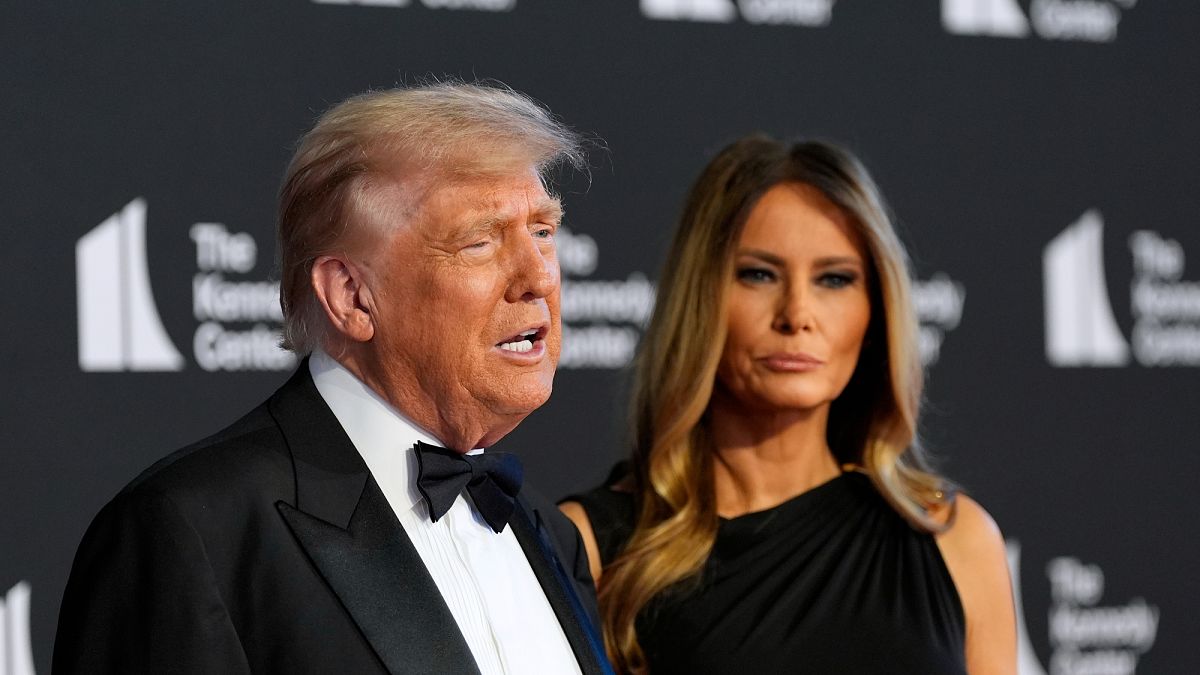Published on
US President Donald Trump told reporters on Wednesday that he would send letters to trading partners in the next week or two, outlining unilateral tariff rates.
“We’re going to be sending letters out in about a week and a half, two weeks, to countries, telling them what the deal is,” Trump said at the John F. Kennedy Center for the Performing Arts in Washington.
“At a certain point, we’re just going to send letters out. And I think you understand that, saying this is the deal, you can take it or leave it,” he added.
This would put Trump ahead of his tariff deadline, as the president previously paused so-called “reciprocal” duties for 90 days until 8 July. The higher rates are set to kick in on the 9th.
Trump told reporters at the Kennedy Center that a delay to the deadline is unlikely, although US Treasury Secretary Scott Bessent previously suggested there may be some flexibility.
“It is highly likely that those countries – or trading blocs as is the case with the EU – who are negotiating in good faith, we will roll the date forward to continue the good-faith negotiations,” Bessent told the House Ways and Means Committee. “If someone is not negotiating, then we will not.”
The US has thus far only managed to secure a trade framework with the UK, as well as clinching a tariff deal with China.
Trump was nonetheless upbeat about negotiations on Wednesday.
“We’re rocking in terms of deals,” he said. “We’re dealing with quite a few countries and they all want to make a deal with us.”
Following talks in London, Trump said on Wednesday that magnets and rare earths would be supplied up front by China and that the US would allow Chinese students into its colleges and universities.
The president added that a 55% tariff would be applied to Chinese imports. A White House official, who was not authorised to discuss the terms publicly, said the 55% was not an increase on the previous 30% tariff on China because Trump was including other pre-existing import taxes. Specifically, the president was tallying up his 10% baseline tariff, the 20% fentanyl trafficking levy and a 25% pre-existing tariff on China.
In May, the US agreed upon a trade framework with the UK, which allows US goods to be fast-tracked through customs and reduces trade barriers on a number of products. The framework lowers US duties on British steel, aluminum and cars, although there are some knots to work out, meaning the specifics of the deal could arrive later than the 9 July deadline.
US Commerce Secretary Howard Lutnick said on Wednesday that a deal with the European Union will likely be among the final trade agreements concluded by the United States.
“I’m optimistic that we can get there with Europe. But Europe will be probably [at] the very, very end,” Lutnick told CNBC.
In May, Trump threatened a 50% tariff on EU goods coming to the US, although he later said he would hold off on this threat until 9 July. The president originally placed a 20% so-called “reciprocal” levy on EU goods, but this duty was lifted during the 90-day pause window.

